As with any massive pop culture phenomenon, STAR WARS has its detractors. It can be very easy to hate on anything when it feels like you’re constantly inundated with it at your local cinema, Target, and whoever is selling the souvenir glasses this time around. George Lucas reinvented movie marketing—for better or worse—with his 1977 space opera but that’s not necessarily how it was supposed to go down. In an alternate universe—perhaps a long time ago, or even in a moderate distance away—STAR WARS was a modest hit, or maybe even a bomb; George Lucas moved on from the Skywalker saga and continued making moderately budgeted, more personal films. The only sequel STAR WARS garnered was a low budget, made for television adaptation of SPLINTER OF THE MIND’S EYE and Luke and Leia remained potential lovers. With 40 years of reputation in mind, it’s easy to forget what a simple, wonderful piece of ‘70s pop culture the original film was and how groundbreaking it was, ushering in a new era of special effects and storytelling. It may seem impossible with currently eight films, books, several TV series, and mountains of Kenner toys filling basements around the world, but the time has come to reassess STAR WARS not only as a singular film, but also as a work of low-budget art. The seed of the idea began with Lucas, but the original STAR WARS is a sum of its parts, which included a sharp thinking behind the scenes team that needed to think small in order to be big.
“I don’t think many people at Fox had any feeling for what was going to happen and what it was going to be like,” producer Gary Kurtz recalled to MASHABLE. “They just wanted to get it done and wrapped up, and it was just a kind of minor annoyance to them.”
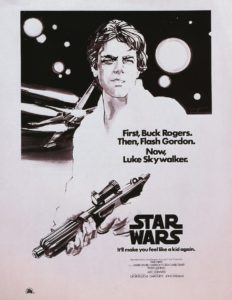
STAR WARS was of course the brainchild of George Lucas, a young director who looked to work outside of what he perceived as a dated and oppressive Hollywood studio system. Lucas wanted to make films independent of interference. His feature debut THX 1138 was a failure at AMERICAN ZOETROPE (a company formed by he and fellow filmmaker Francis Ford Coppola), but AMERICAN GRAFFITI was an unqualified success for his newly created LUCASFILM, LTD. It was AMERICAN GRAFFITI that audiences have to thank for STAR WARS. The writer director had at one time wanted to adapt FLASH GORDON into a feature length film but was unable to acquire the rights. Lucas decided he’d simply create his own space fantasy, THE STAR WARS. Lucas had a vision that was one part nostalgia and one part visionary filmmaking.The original STAR WARS certainly came from the vision of George Lucas, but there were so many voices assisting the young filmmaker at the time that helped shaped the film into its end product.
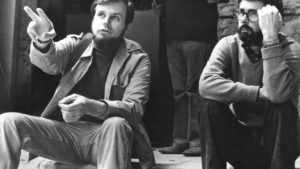
Producer Gary Kurtz —the guy with his Abraham Lincoln beard seen in many behind the scenes photos with Lucas—was an important cog in the making of the film. We went in and told Fox originally that we could do it for $7 million,” explained Kurtz in 2014. “That was definitely a finger-in-the-wind time. But when the Fox Visual Effects Department did an analysis of the script, they thought the visual effects alone would cost $7 million. We ended up with kind of a $9 million official budget, and then it ended up being $10.1 million [less than the average studio comedy at the time].” Kurtz wore many beards around the set of STAR WARS, consulting his Comparative Religion textbooks during the scriptwriting process, helping shape the concept of the force as well as acting as second unit director.
Another driving force behind the original film was artist Ralph McQuarrie who helped design the very ‘70s sci-fi look of the film. McQuarrie’s artwork was quite similar to Chris Foss’s work that adorned so many sci-fi book covers throughout the decade. (Foss was contacted by Alejandro Jodorowsky to work on his unmade adaption of Frank Herbert’s DUNE) McQuarrie’s artwork combined classic science fiction tropes—aliens, spaceships, vast worlds—with a very particular influence from of ‘70s futurism. Akin to writer/director Lucas, McQuarrie was looking to the future while still keeping one paintbrush in the past.
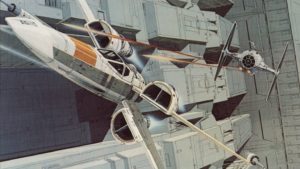
Tasked with bringing those McQuarrie paintings to life was Roger Christian. Christian designed the physical sets, bringing the combined vision of Kurtz, McQuarrie, and Lucas to life. “Finally somebody’s doing it the right way,” Christian thought when Lucas mentioned that the director was looking for a more lived in universe for STAR WARS. “All science fiction before was very plastic and stupid uniforms and Flash Gordon stuff,” Christian told ESQUIRE in 2014. “George was going right against that. My first conversation with him was that spaceships should be things you see in garages with oil dripping and they keep repairing them to keep them going, because that’s how the world is.” Christian built most of the sets from scrap metal. “There were junkyards full of it, because they sold it by weight. I could buy almost an entire plane for 50 pounds.” Working on the sets of STAR WARS wasn’t akin to working on the set of a major Hollywood film; it was closer to a Roger Corman film where everything was ramshackle, and literally built from spare parts. “For Han Solo’s blaster gun, I wanted it like a Western gun, so I stuck old sights on it and everything.”
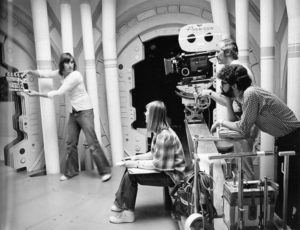
For the iconic lightsaber, Christian stopped by a camera shop where he would rent equipment from time to time. “I asked the owner if he had any spare parts somewhere. And he pointed to some boxes buried deep under the shelves and there in the box were several Graflex flashgun handles. They were perfect, heavy, and had a red button for firing the flash. I could not believe my luck.” Obi-Wan may have felt there was no such thing as luck, but a lot of the making of STAR WARS was just that. Even Ben Burtt’s sound design had a ramshackle charm that feels like it was made out of spare parts. The laser blast sound heard in the STAR WARS films was that of a hammer coming down on an antenna tower guy wire.
One of the things that made the original STAR WARS so special in 1977 was its oft-overlooked sense of humor. When it was rumored that this year’s ROGUE ONE: A STAR WARS STORY was going back for reshoots, fans were upset that they were taking a “serious STAR WARS film” and shoehorning in a misguided sense of humor. Part of what made the original film so relatable to audiences outside of the die hard STAR TREK fans and comic book readers, was a very relatable—as Lawrence Kasdan would say—delightfulness to the proceedings. Even EMPIRE for all it’s gravitas and darker tone has quite a bit of levity—particuarly in the dialogue between Han Solo and Princess Leia—attributed to screenwriter Kasdan. “[The original script] did sound like gobbledygook in a lot of ways,” explains Kurtz. Even Alan Ladd, the Fox executive who greenlit THE ADVENTURES OF LUKE STARKILLER AS TAKEN FROM THE JOURNAL OF THE WHILLS, SAGA 1, STAR WARS (the original title) said “it doesn’t make much sense to me.” He trusted Lucas though. Enter Willard Huyck and Gloria Katz, two screenwriters who were friends with Lucas and had collaborated on an early treatment of AMERICAN GRAFFITI with the filmmaker. While its hard to pick out exactly what portions of the script can be credited to the Huyck and Katz “comedy polish” it’s long been suggested that they contributed Luke’s conversation with Threepio in his garage on Tatooine as well as the exchanged between Han and the droids about Chewbacca being a sore loser and Han’s ribbing of Luke about his schoolboy crush on the Princess. According to THE SECRET HISTORY OF STAR WARS, Lucas has stated that “The scenes are mine, the dialog is theirs.”
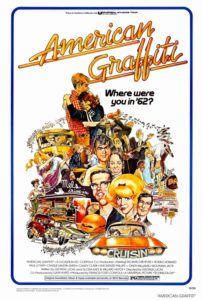
The Huck and Katz contributions helped bring some bounce and humor to the proceedings. Looking back at THX 1138, Lucas appeared to have use a colder tone with his scripts and a whimsical adventure in space certainly called for more humor and bounce. Even his love of hot rod seemed to imply that Lucas was more into the mechanics of things than the humanity of the story. One could argue that that’s where Lucas went wrong with this prequel trilogy, too much concentration on technology.
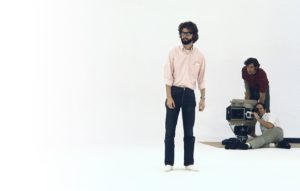
When looking at STAR WARS as a singular film and not part of a larger franchise, our favorite heroes and villains take on different roles. With out the backstory of the prequel trilogy or the character developments in the sequels, the characters are quite different. Luke Skywalker is a simple farmboy thrust into an unbelievable adventure, not following a path of fate or destiny. Darth Vader is a menacing, Gestapo like enforcer whose reliance on an ancient religion is scoffed at by his fellow Imperial officers rather than a cog in Emperor Palpatine’s ancient plan. He even has a boss in Governor Tarkin. Ben Kenobi, when seen from a certain point of view, is an even more tragic figure when seen as an aging warrior who’s pupil turned to evil and murdered Anakin Skywalker rather than relying on all that nonsense regarding the character taking the reins on young Anakin’s training despite perceiving him as dangerous in THE PHANTOM MENACE. The love triangle set in place for Han, Luke, and Leia could also have been a more interesting place to take these three characters without the reveal that Luke is out of the running due to galactic laws regarding incestuous relations. One of the funnier, more delightful scenes in the original film the aforementioned moment featuring Han teasing Luke about putting the moves on the young Jedi’s would be girlfriend. Admittedly, it is easier to view STAR WARS as a singular film than EMPIRE or JEDI, as they rely so much on the events of the previous and ensuing films respectively.
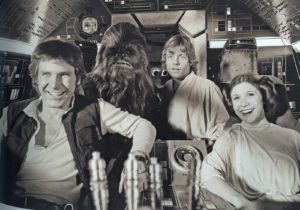
All of these parts, along with the shaggy haircuts, tight fitting jackets and plenty of earth tones added up to a film that was somewhere in between a galaxy, far, far away and the American Midwest. By the time Lucas was working on his prequel trilogy, he was the big boss, surrounded by yes men with an unlimited budget to simply do whatever he wanted, no matter how misguided. STAR WARS’ low-budget inventiveness brought on big-budget blandness.
The first test audiences who viewed the film were not necessarily blown over by the film. Most just politely enjoyed it not foreseeing the cultural impact the film would have. One brave soul—possibly the first person to hate STAR WARS—called it “the worst film I’ve seen since GODZILLA VERSUS THE SMOG MONSTER.” The film premiered on Wednesday May 25, 1977. It was moved up to early in the summer for fear that it would get pummeled at the box office by SMOKEY AND THE BANDIT. Lucas claims he felt that the film would barely register, but he still negotiated an unprecedented deal for the merchandising rights to the film which represents some sort of bizarre genius or that he had access to a time machine.
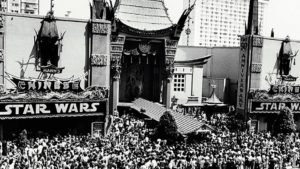
After that weekend, nothing was the same for the young filmmaker. STAR WARS wasn’t some flash in the pan, low-budget sci-fi flick anymore; it was a phenomenon. The film would wouldn’t be relegated to grindhouses across America but instead become a turning point in pop culture and film history. STAR WARS wasn’t something just for nerds, STAR WARS was for everybody: young, old, boy, girl, black, white, and green. It wasn’t a film that reveled in minute details and trivia recalling William Shatner’s “Get a life” sketch on SATURDAY NIGHT LIVE. regarding obsessive STAR TREK fans. It was a story told in broad strokes, and much like the cave in EMPIRE, you bring into it what you take with you. It was on the tip of everyone’s tongue. There was never a phenomenon like it before and there never will be one again. Any film that develops such a rabid following and so much excitement will be asked of it:
“But it is it STAR WARS big?”
It was only a matter of days before his friends were looking to borrow money (Coppola needed some scratch to finish APOCALYPSE NOW). Despite his foibles after the runaway success of STAR WARS, it cannot be argued that Lucas was a visionary filmmaker who built upon decades of history and knowledge and changed the game, for better or for worse. Outside of it’s legacy—and the countless video games, action figures, and limited edition collectors plates—STAR WARS remains a ramshackle testament to perseverance, elbow-grease, and low-budget know how.
It’s all a lot of simple tricks and nonsense.
-MIKE VANDERBILT
@MikeVanderbilt
- Vampsploitation - January 15, 2018
- Hiatussploitation - December 5, 2017
- Live From Fantastic Fest, 2017 - September 28, 2017
Tags: 1977, George Lucas, star wars

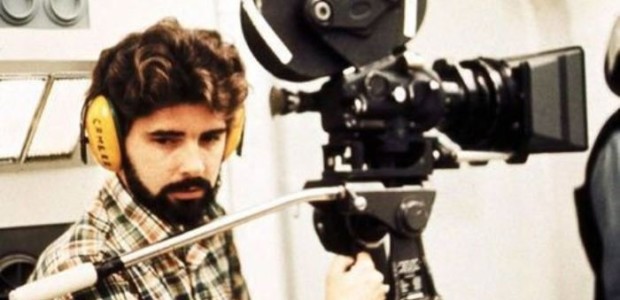
No Comments